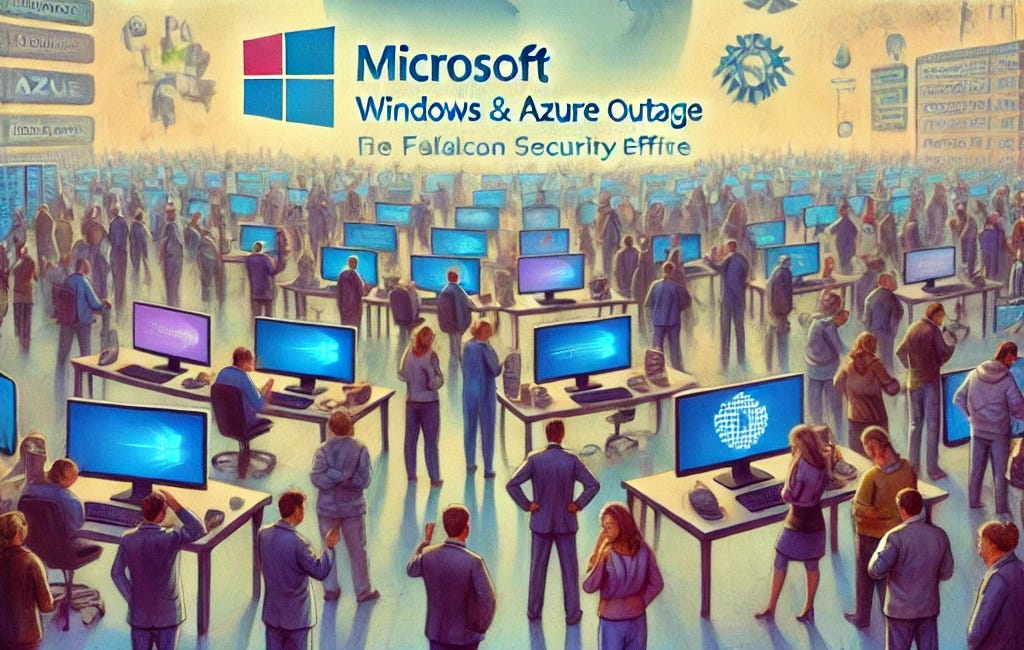Microsoft SharePoint Meltdown: Zero-Day Glitch Puts Tens of Thousands in Hackers’ Crosshairs
Global breach exposes gaping holes in Microsoft’s security fabric, revives memories of the CrowdStrike chaos, and raises urgent alarms for India’s fragile cyber defences and sidelined diaspora.
By Karan Bir Singh Sidhu
Retired IAS officer and former Special Chief Secretary, Punjab; Gold Medalist in Electronics & Telecommunication Engineering. He writes at the intersection of cybersecurity, cyber-warfare, national security, and geo-strategy.
Microsoft SharePoint Shockwave: A Zero-Day Explodes Across the Globe
A weekend that should have been a sleepy midsummer lull detonated into full-blown cyber-chaos when security firms sounded the alarm on a brand-new, never-seen-before weakness in Microsoft SharePoint Server. Within hours, a shadowy crew of hackers had gone wild, hijacking government portals, university archives, energy-sector dashboards and even a major Asian telecom’s document vault. One security executive captured the mood succinctly: “Anybody running on-prem SharePoint has a bull’s-eye painted on the front door.”
From One Malicious Packet to Total Takeover
The technical trigger is chillingly simple. A single doctored request to an obscure SharePoint page called ToolPane.aspx can slip a booby-trapped file onto the server. That file then siphons off the cryptographic keys SharePoint uses to decide who is—and isn’t—allowed inside. Steal those keys and you own the castle: Outlook mailboxes, Teams chats, HR records, budget spreadsheets, you name it. Worse, the intruders can waltz back in even after IT teams install the inevitable patch because the keys themselves are now dirty.
Why the Timing Couldn’t Be Worse for Microsoft
This fiasco erupts as Redmond is already reeling from bruising audits over past cloud mishaps. Critics say the company’s patch pipeline is moving too slowly for an era where adversaries reverse-engineer hotfixes in days, not months. The fact that the only safe short-term advice is “yank your SharePoint server off the internet” speaks volumes about how hard a proper fix will be. Enterprises that still cling to on-prem mail and file shares now face an impossible choice: rip the cord and paralyse their workforce, or leave the door open and pray the wolf is busy elsewhere.
Déjà Vu of Digital Turbulence: The CrowdStrike-Airline Meltdown
If this drama feels familiar, cast your mind back to July 2024 when a bungled Falcon sensor update from security giant CrowdStrike sent Windows servers worldwide into the dreaded “blue screen of death.” Airline check-in kiosks, baggage belts and booking platforms collapsed in lockstep, grounding jets from New York to New Delhi. Passengers camped on terminal floors while technicians frantically rolled back software; some carriers took days to clear the backlog. That fiasco proved one rogue security update can strand travellers as effectively as a blizzard—and that Microsoft’s ecosystem remains a single point of failure when things go sideways.
A Ricocheting Breach With No Obvious Motive—Yet
At first glance the new SharePoint campaign is indiscriminate. Victims range from a state legislature in the U.S. Midwest to European ministries, from a Brazilian university to an energy company powering a giant coastal grid. Some servers were merely snooped; others had public document repositories wiped clean. Investigators are split on whether the endgame is old-fashioned espionage, ransomware-style extortion, or something more exotic—planting backdoors for a rainy geopolitical day. The only certainty: thousands of servers are exposed and the attackers are still hungry.
Security Teams Locked in a 72-Hour Knife-Fight
Incident-response hotlines have been ringing nonstop as exhausted admins comb through logs hunting for the tell-tale implant that starts it all. The nightmare scenario is discovering it was dropped days ago, quietly harvesting passwords, business plans or election data. Because the stolen keys work like universal passports, teams must now rotate every MachineKey on every SharePoint box, a painstaking process that feels like swapping a plane’s engines mid-flight.
Global Coordination—With Glaring Funding Gaps
Cyber authorities in the United States, Canada, Australia and across Europe fired off synchronized alerts, but even that well-oiled drill exposed vulnerabilities. Some information-sharing centres admitted they took twice as long as usual to notify local governments because recent budget cuts had gutted analyst ranks. As one state responder in the desert Southwest put it, “There’s a mad scramble nationwide, and we’re doing triage with half the nursing staff.”
Lessons for India: NIC’s Leaky Ramparts and NRI Frustration
If ever there was a wake-up call for New Delhi, this is it. The National Informatics Centre still hosts an ocean of critical sites for central ministries and state departments on ageing, sometimes unpatched Windows stacks. Internal audits quietly reveal passwords left at defaults, SSL certificates long expired and administrator accounts shared across agencies. Add to that the baffling policy of geoblocking government portals—everything from land-records dashboards to scholarship forms—so that Indians abroad are locked out unless they fire up a VPN. The result is a double whammy: NRIs feel snubbed while hostile actors discover exactly which IP ranges are implicitly trusted. Should a SharePoint-style zero-day hit NIC’s farm of servers, the fallout could cripple e-tendering platforms, parliamentary document libraries and even digital-identity services. India’s cyber battlefield is no longer a theoretical frontier; it is a live theatre, and the enemy just demonstrated a brand-new missile.
Patch, Purge and Prepare for the Next Wave
Microsoft will eventually ship a code fix, but that is only half the story. Organisations worldwide must treat key rotation as seriously as code patches, segment collaboration servers from crown-jewel databases and rehearse wipe-and-rebuild drills before crisis strikes. Meanwhile the SharePoint saga underscores an uncomfortable truth: collaboration tools have become the soft underbelly of modern governance and commerce. Until vendors, regulators and customers shoulder equal responsibility for hardening them, today’s “shockwave” will look tame compared with the earthquakes still to come.
Global Chaos: Microsoft Windows and Azure Outage Paralyzes Critical Services
Global Disruptions of Microsoft Windows-based Systems






Well articulated bro. You’ve summed up the big extremely critical event in weighed words in your typical style. Very useful.
A suggestion: could you explicitly bring out the security threat, if any, to the individual.